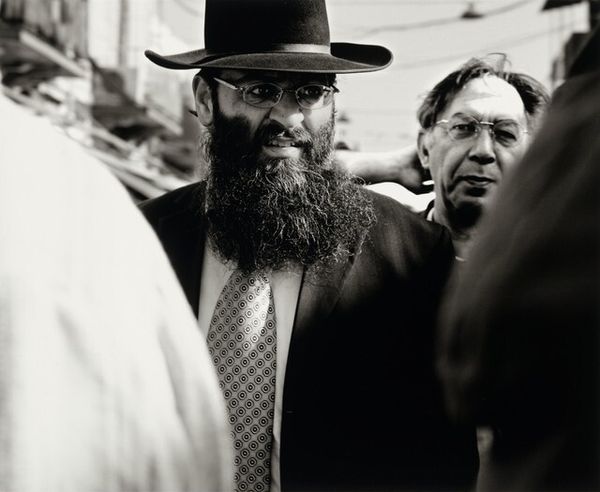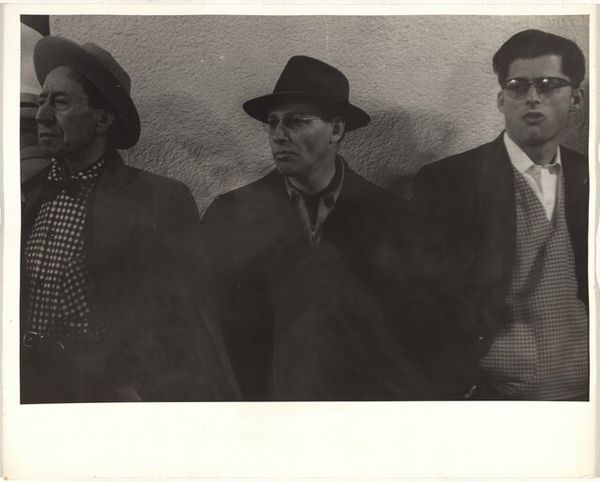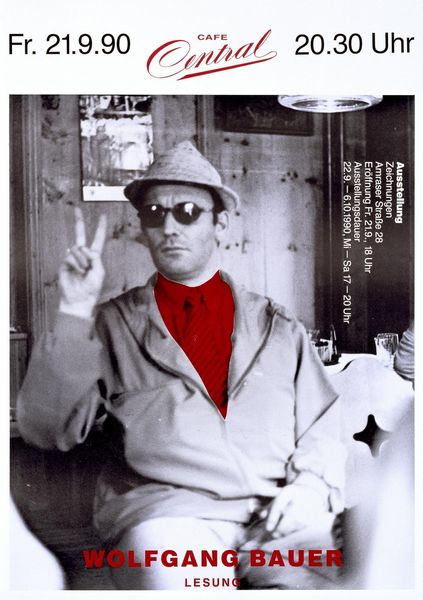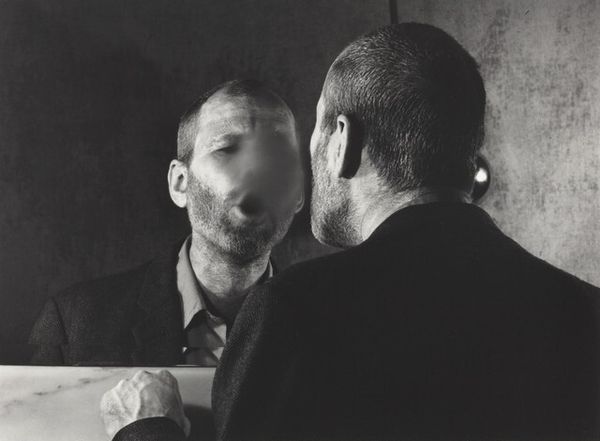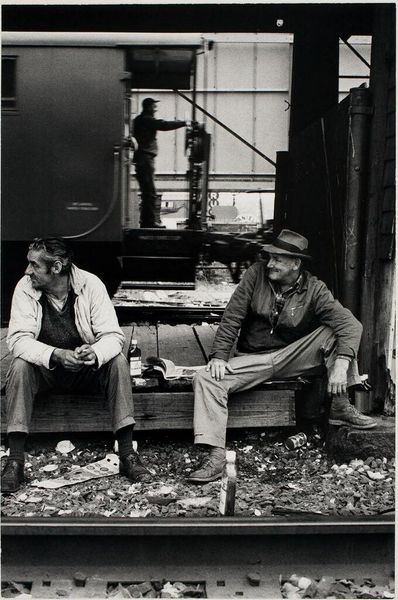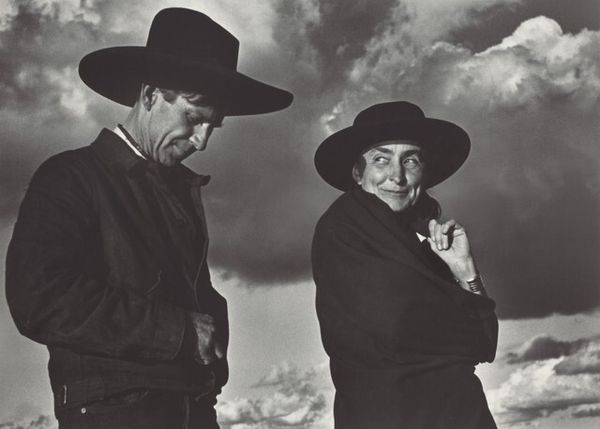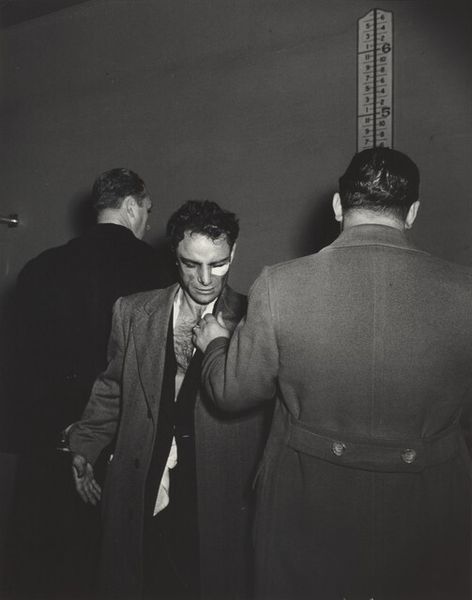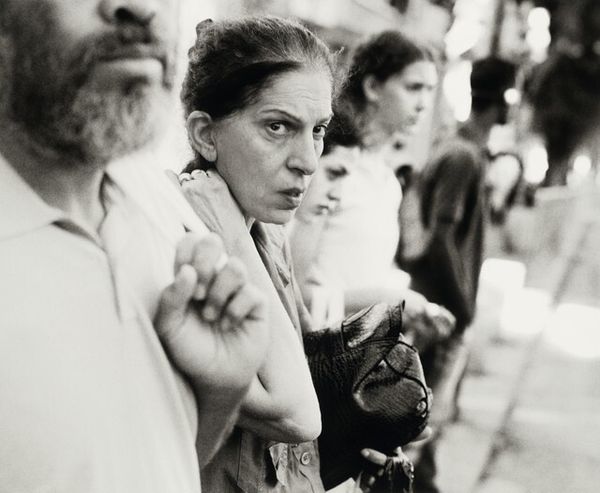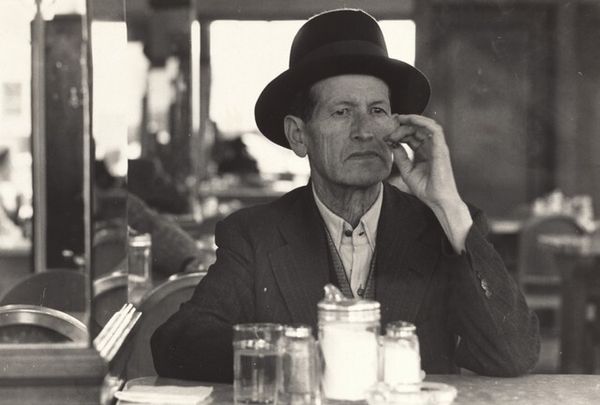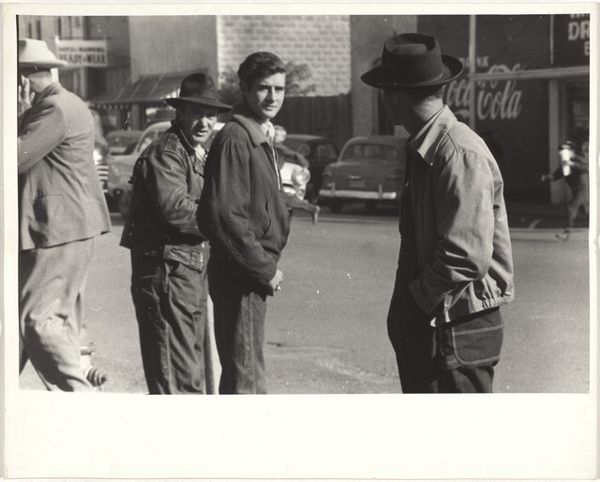
photography, gelatin-silver-print
#
portrait
#
black and white photography
#
street-photography
#
photography
#
gelatin-silver-print
#
cityscape
#
modernism
Dimensions: image: 40.64 × 49.53 cm (16 × 19 1/2 in.) sheet: 58.42 × 67.31 cm (23 × 26 1/2 in.)
Copyright: National Gallery of Art: CC0 1.0
Curator: Looking at this gelatin-silver print by Leo Rubinfien, possibly taken between 2005 and 2014, entitled "Jerusalem, 2005, on Jaffa Street", I’m struck by its stark contrasts. What's your immediate take? Editor: The youth's gaze grabs you, doesn't it? There’s something both direct and guarded in his expression. The man in the background only emphasizes it. It's a study in contrasts: tradition and modernity, exposure and retreat. Curator: Rubinfien has a way of capturing these everyday street scenes that speak volumes about the social fabric of a place. Placing his subjects in their lived environments, he exposes an incredibly multilayered and complex dynamic between identity, location, and socio-cultural context. I wonder about the decision to shoot this in black and white. Editor: The lack of color lends a timeless quality, but also distills the scene to its rawest emotional components. Notice how the light falls, almost halo-like, around the subject’s hat and face? This imagery evokes notions of purity and devotion. Curator: Right, the contrast is sharp, particularly with his traditional clothing amidst a busy urban scene, which enhances the photograph’s cultural impact. The photograph creates an ongoing dialogue regarding what visibility and tolerance in public space means for Jerusalem's diverse population. Editor: Absolutely. And that paper he holds—is it a prayer, a note, a momentary distraction? Its blankness invites the viewer to project meaning. Perhaps he’s absorbing, internalizing some unspoken tenet before releasing it out into the world? It gives this photograph a ceremonial, yet unsettling feel. Curator: And given the debates on secularism and religious observance in Jerusalem, the act of documenting and presenting such figures matters a great deal in a historical sense, too. Rubinfien positions the scene at the intersection of tradition and contemporary societal discourse, prompting questions about its cultural narrative. Editor: So, we see beyond just a street scene, diving into deeper streams of cultural narrative. Thank you! Curator: Yes, revealing the public dimensions that exist in photographs often deemed quotidian, and enriching our understanding of the ever-changing world.
Comments
No comments
Be the first to comment and join the conversation on the ultimate creative platform.
